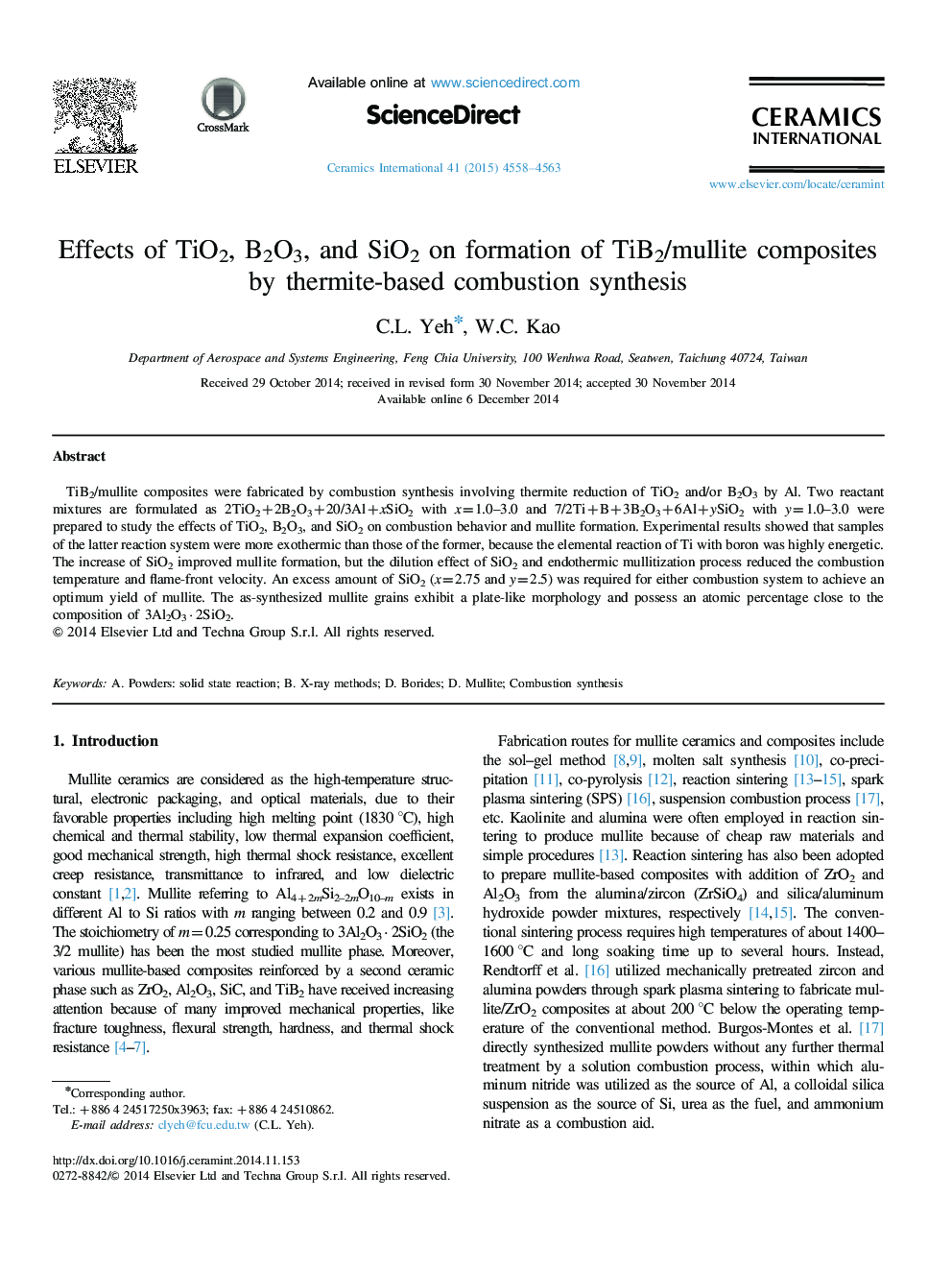| Article ID | Journal | Published Year | Pages | File Type |
|---|---|---|---|---|
| 1460331 | Ceramics International | 2015 | 6 Pages |
TiB2/mullite composites were fabricated by combustion synthesis involving thermite reduction of TiO2 and/or B2O3 by Al. Two reactant mixtures are formulated as 2TiO2+2B2O3+20/3Al+xSiO2 with x=1.0–3.0 and 7/2Ti+B+3B2O3+6Al+ySiO2 with y=1.0–3.0 were prepared to study the effects of TiO2, B2O3, and SiO2 on combustion behavior and mullite formation. Experimental results showed that samples of the latter reaction system were more exothermic than those of the former, because the elemental reaction of Ti with boron was highly energetic. The increase of SiO2 improved mullite formation, but the dilution effect of SiO2 and endothermic mullitization process reduced the combustion temperature and flame-front velocity. An excess amount of SiO2 (x=2.75 and y=2.5) was required for either combustion system to achieve an optimum yield of mullite. The as-synthesized mullite grains exhibit a plate-like morphology and possess an atomic percentage close to the composition of 3Al2O3·2SiO2.
